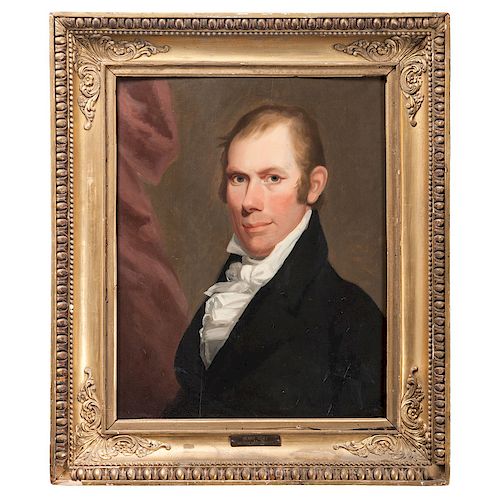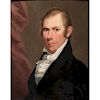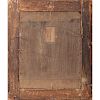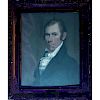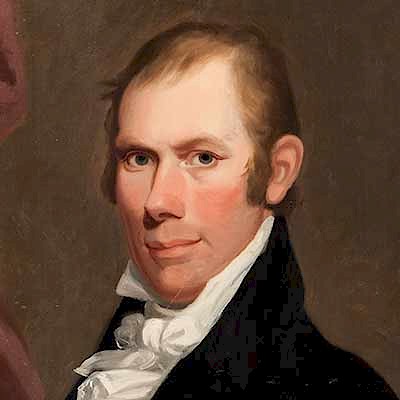First Portrait of Henry Clay by Matthew Harris Jouett
About Seller
6270 Este Ave.
Cincinnati , OH 45232
United States
With offices in Cincinnati, Cleveland and Denver, Cowan’s holds over 40 auctions each year, with annual sales exceeding $16M. We reach buyers around the globe, and take pride in our reputation for integrity, customer service and great results. A full-service house, Cowan’s Auctions specializes in Am...Read more
Two ways to bid:
- Leave a max absentee bid and the platform will bid on your behalf up to your maximum bid during the live auction.
- Bid live during the auction and your bids will be submitted real-time to the auctioneer.
Bid Increments
| Price | Bid Increment |
|---|---|
| $0 | $25 |
| $500 | $50 |
| $1,000 | $100 |
| $2,000 | $250 |
| $5,000 | $500 |
| $10,000 | $1,000 |
| $20,000 | $2,500 |
| $50,000 | $5,000 |
| $100,000 | $10,000 |
About Auction
Oct 6, 2018
The Americana, Including Fine and Decorative Art: Premier Auction features over 500 lots of fine art, furniture, silver, rugs, glass, Folk Art, timepieces, and advertising. Cowan's Auctions dawnie@cowans.com
- Lot Description
Matthew Harris Jouett (American, Kentucky, 1788-1827). Oil on panel, housed in a gilt frame, ca 1817-1818. A portrait of Henry Clay (1777-1852); 24.25 x 19.25 in. (sight), 33.25 x 28.25 in. (frame).
After studying with Gilbert Stuart in Boston, Matthew Harris Jouett painted in 1818 the "best known early portrait of Henry Clay," a work which has become the "canonical early image" of Kentucky's most esteemed statesman. (Amyx, p. 310). Jouett’s portrayal of Clay became so popular that he made several copies; at least five survive. Until recent discoveries in the Jouett literature, exactly which of these portraits was the original has been unclear. Now, we know that the first was “painted for a hemp manufacturer who had come in from the country to hear Mr. Clay speak at the old court-house in Lexington…” and was so pleased by the Great Commoner’s proposal for a protective tariff that “before leaving the courthouse, he engaged Jouett to make for him a portrait of the statesman” (McDowell, p. 767-768).
James Weir was a Lexington businessman and one-time trustee of the city. Initially a dry goods merchant in partnership with a Mr. Little, he set out on his own in October, 1819, as announced in the Lexington Reporter on May 19. Over the next decade, he built factories which manufactured hemp rope and cotton bagging for the downriver trade. He also became an active supporter of Henry Clay, whose star on the national political scene was in the ascendant.
Clay’s court-house speech was an impassioned plea for protective tariff measures. In the aftermath of the War of 1812, the British, having lost the war, sought to win the battle for economic supremacy over the errant colonies. By flooding the American market with cheap manufactured goods and raw materials they created a severe depression. As reported by the legendary editor Horace Greeley, “our manufacturers went down like grass before the mower. And our agriculture and the wages of labor speedily followed.” (Taylor, p. 78). Conditions in Kentucky were particularly grim, especially in the distilled spirits industry, overwhelmed by imported rum and brandy from British colonies in the Caribbean.
As endorsed by Henry Clay, the tariff act of 1818 sought to remedy the decline by imposing stiff levies, an action clearly beneficial to the interests of James Weir. In a burst of enthusiasm he is said to have paid Jouett $300 on commission for the portrait. (Perrin, p. 276). It is hardly surprising that Jouett was in the audience for Clay’s speech. His studio was located at Short and Market Streets on the corner behind the courthouse, and not just a work space, but frequently the scene for special showings and events to benefit the local community. As a founding member of the Kentucky Institute, the commonwealth’s first scientific society, he was knowledgeable about central Kentucky economics, even reporting that he had heard a paper read on “the importance and best mode of converting grain into spirit.” (Ramage and Watkins, p. 235).
Color, form, and character, the three lessons in likeness Jouett learned from Stuart, were well deployed in his first portrait of Clay. Clay’s warm face tones are richly sympathetic with his hair color, a reddish brown often seen in the family line. His facial features are deeply modelled and contoured, their mass accentuating the high placement on the planar field, and well balanced by the frothy cascading collar, stock, and jabot below. Behind the sitter Jouett has, as he saw in Gilbert Stuart’s portrait of Joseph Buckminster, “flung in a pillar” not as a romantic gesture to past ruins, but as a neoclassical symbol of the solid foundations of the young republic.
But it is Jouett’s grasp of his sitter’s character that marks this portrait, and much of his subsequent work, as subtle yet powerful signs of identity. Clay dominates the canvas, his back straight, parallel to the solid lines of the columnar form. He gazes out toward the viewer with a look at once self-assured and wary, the slight curl of the lips imparting a readiness to snarl or to purr. This is a man who could be both compassionate and disdainful, a figure of authority who also felt that “courtesies of a small and trivial character are the ones which strike deepest in the grateful and appreciating heart.” (Channing, p. 408).
Of this portrait Madeleine McDowell, the sitter’s great granddaughter, wrote that the “face which we see” in this portrait “is not the familiar face of the man of matured powers, of ripened judgment, and of wise beneficence, the framer of compromises, the great pacificator. It is Henry Clay the war maker, 'young Harry of the West’ not yet grown old, the leader of young America in the House of Representatives, the man who, with all the ardent patriotism of a child of the decade which had heard the Declaration of Independence, defied the peace party, and drove” the country into the War of 1812, the “Henry Clay in whom was added to the patriotism which he had brought from Virginia, and the enthusiasm which was his birthright, not a little of the reckless daring of the back woodsman of Kentucky.” (McDowell, p. 768).
Apparently Weir and Clay fell out, possibly over issues concerning the Lexington and Ohio Railway of which Weir was a founding investor and trustee. Though initially committed to the project, Clay backed out in the late 1830s, and by 1840 the rail line was bankrupt and forfeited to the Commonwealth of Kentucky. In disgust, Weir sold the portrait of his former idol, sending it on a journey which culminated in acquisition by the venerable firm of David David in Philadelphia, specialists in historic American portraiture. It remained in their inventory until an advertisement in the February, 1966 Antiques Magazine brought it to the attention of the Lexington dealer Caulder Turner.
Turner’s acquisition was loudly proclaimed in Fred Luigart’s article “Missing Clay Portrait Returned to Lexington” (Louisville Courier-Journal, February 8, 1966). Inspired by the opportunity to enhance both Clay and Jouett’s presence in the Commonwealth, the portrait was purchased by Mr. And Mrs. Frank G. Trimble. It was last shown publicly in 1980 in the exhibition Matthew Harris Jouett: portraitist of the ante-bellum South, organized by William Barrow Floyd for Transylvania University. Now, not only has it reappeared, but its significance as a defining moment in the life of both artist and sitter, has been firmly documented.
LOCATION OF VARIANTS: Ashland, The Henry Clay Home, Lexington; Transylvania University, Lexington; U. S. Department of State, Washington; Westmoreland Museum of Art, Greensburg, Pa.
Works Cited:
Amyx, Clifford. “The Portraits of Henry Clay: a brief history and a calendar” in The Papers of Henry Clay: Supplement, 1793-1852. Lexington: University Press of Kentucky, 1992.
Channing, William H. The Spirit of the Age: volume 1. New York: Fowlers and Wells, 1850.
McDowell, Madeline. “Recollections of Henry Clay”, The Century Magazine, 50 (September 1895).
Perrin, William Henry. History of Fayette County, Kentucky. Chicago: O. L. Baskin, Historical Publishers, 1882.
Ramage, James A., and Andrea S. Watkins. Kentucky Rising: Democracy, Slavery, and Culture from the Early Republic to the Civil War. Lexington: University Press of Kentucky, 2011.
Taylor, George Rogers, ed. The Great Tariff Debate 1800-1830. Amherst: Department of American Studies, 1953.
Acknowledgments:
This catalog entry was written by Estill Curtis Pennington, of Paris, Kentucky. Pennington is the author of Lessons in Likeness: the portrait painter in Kentucky and the Ohio River Valley, 1800-1920, and is currently compiling a catalog raisonné of the works of Matthew Harris Jouett.
Provenance: Commissioned by James Weir, 1818; by sale to James Fletcher Johnston, Lexington; to his wife who sold the painting to a private collector in Washington, D.C.; acquired by David David Inc., Philadelphia; by sale to Caulder Turner, Lexington; by sale to Mr. & Mrs. Frank G. Trimble, Jr., Lexington and descended in the family to the present consignor. - Shipping Info
-
Buyers are required to pay for all packing, shipping and insurance charges. Overseas duty charges are the responsibility of the successful Bidder. Be aware that for larger and/or valuable items, shipping charges can be substantial. - If there is no shipping amount on listed your invoice, you will need to make arrangements to pick up or ship your purchase through an alternative shipping company. Our shipping department can be contacted at 513.871.1670 (ext. 219) or email shipping@cowans.com. - Shipping charges include insurance for your order while in transit. If you have private insurance we will adjust your charge to include only packing and shipping. - Please allow 14 – 21 days after payment to package and ship your purchase as carefully as possible.
-
- Buyer's Premium



 EUR
EUR CAD
CAD AUD
AUD GBP
GBP MXN
MXN HKD
HKD CNY
CNY MYR
MYR SEK
SEK SGD
SGD CHF
CHF THB
THB